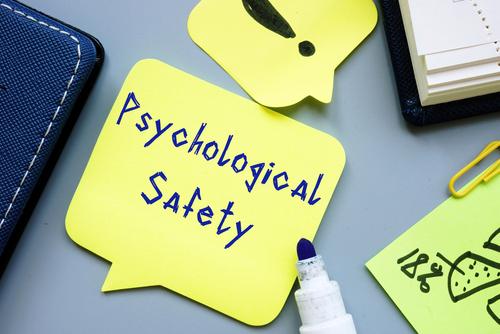Disruptions in the environment around us, while unpleasant at best and heartbreaking at worst, can sometimes contribute to positive improvements in the working culture. One such shift can be seen in businesses that are discussing and implementing psychological safety measures.
Organizational researchers first coined the phrase psychological safety in the 1960s, and it has since piqued the interest of academics looking into team learning, creativity, job performance, and growth. Fear is replaced with respect and compassion when it comes to psychological safety, and it instead creates a workplace where employees know their vulnerabilities are embraced and understood.
Employees who are truly psychologically safe are able to contribute their whole selves to work but also mentally disengage at the end of the day without bringing work stress home with them in a way that negatively affects their health. Sure, one might be thinking about that new project while cooking supper with family, but research reveals that, while industrious, this may not be the best thing.
Sabine Sonnentag, an occupational health psychologist, for example, began thinking about how people may stay healthy while performing well at work in the late 1990s. With time, it became clear that the solution lies in how employees use their nonworking hours. Being able to mentally withdraw from one’s work, in particular, protects against work-related stress. Mental disengagement during nonworking hours not only enhances wellness but also promotes engagement during working hours.
In a hybrid society, talking about mental disengagement is fundamentally incongruent with its—albeit decades-old—meaning, which implies that one should simply not work from home. While separating yourself from your work is more difficult today than it was years ago, when a lunch break provided some respite, it is still feasible with a little effort. When you need to mentally withdraw, here are several strategies:
Understand How the Mind Works
People can sometimes get into the trap of feeling bad about taking time to reset. It can be difficult to shut the computer off if we work on the assumption that the right to downtime is predicated on how many tasks remain to be completed. If employees feel burdened by all the unfinished duties hanging over their head, it could help to understand why they feel this way in the first place. When a person pays attention to something, his or her brain files it away in short-term memory. While many of these memories fade away, brains continue to rehearse those related to incomplete tasks. The Zeigarnik effect causes underlying cognitive stress, as well as the unpleasant sensation of having too many “brain tabs” open. To begin closing those tabs in one’s brain, give them a name. According to a recent study, writing about work-related problems can help “offload” them from a person’s memory.
Recognize That It Isn’t Entirely Up to You
While employees have the ability to make the most of their free time, it is not only their obligation to ensure their personal well-being, meaning their immediate manager has a critical impact, as does the overall organizational climate. Even more so, how easily people disengage is largely determined by the activity itself. If time pressures at work are increasing, it’s no surprise that the number of employees who struggle to mentally disengage during nonworking hours is increasing alongside them. As a result, take some time to examine whether there are issues that should be addressed with your management team.
If You Must Be Engaged, Make It Positive
The negative impacts of not disengaging after the workday are mostly caused by negative thinking. Positive thinking, on the other hand, has been discovered to be advantageous. Thinking positively implies accepting that work can be difficult but choosing to press forward with determination and asking for help (or feedback!) when necessary. If there is an issue, try to solve it. There is a lesson to be learned that develops through circumstances, professionally and emotionally, even if there appears to be no answer.
Anne Tiedemann is SVP people & investor relations at Glasswall.

